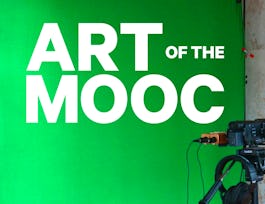This course examines how the idea of "the modern" develops at the end of the 18th century in European philosophy and literature, and how being modern (or progressive, or hip) became one of the crucial criteria for understanding and evaluating cultural change. Are we still in modernity, or have we moved beyond the modern to the postmodern?



The Modern and the Postmodern (Part 1)

Instructor: Michael S. Roth
Sponsored by InternMart, Inc
138,446 already enrolled
(1,017 reviews)
Skills you'll gain
Details to know

Add to your LinkedIn profile
See how employees at top companies are mastering in-demand skills


Earn a career certificate
Add this credential to your LinkedIn profile, resume, or CV
Share it on social media and in your performance review

There are 8 modules in this course
“The Modern and the Postmodern Part I” covers the first half of a full semester course on European history, literature and philosophy. We begin with Immanuel Kant and Jean Jacques Rousseau and conclude with Friedrich Nietzsche and Charles Baudelaire and a very quick look at painting at the time they wrote. Although in the final week themes of postmodernism begin to emerge, a discussion of how modernism becomes postmodernism is at the heart of Part II of this course.
What's included
2 readings
Why is philosophy relevant to modernity? Through reading Jean-Jacques Rousseau and Immanuel Kant, we examine philosophy as a reflection on modernity and progress.
What's included
2 videos1 reading
Using Rousseau’s Discourse on the Origins of Inequality, we study how the pursuit of knowledge is related to the politics of inequality.
What's included
4 videos1 reading
Karl Marx is our focus here as we move from a consideration of ideas to a confrontation with alienation, class struggle and revolution.
What's included
5 videos1 reading1 peer review
We read Flaubert’s Madame Bovary as a reflection on convention, stupidity and art in the wake of the failures of mid-19th century revolution.
What's included
4 videos1 reading1 peer review
We situate Charles Darwin’s great achievement in the context of the English Enlightenment traditions and reimaging the world without a goal for change.
What's included
4 videos1 reading
Through an examination of Charles Baudelaire and Friedrich Nietzsche, we focus on an aesthetic embrace of intensity instead of search for the “really real.”
What's included
6 videos1 reading1 peer review
A Quick Survey of how advanced painting moved toward a consideration of the surface of the canvas and away from a quest for the most realistic representation of the world.
What's included
2 videos
Instructor

Offered by
Why people choose Coursera for their career




Learner reviews
1,017 reviews
- 5 stars
84.10%
- 4 stars
12.26%
- 3 stars
1.96%
- 2 stars
0.58%
- 1 star
1.07%
Showing 3 of 1017
Reviewed on Sep 5, 2015
I've not finished this course yet, but I found it to be excellent, the content is important to understand, the teacher is clear and I enjoy listening to him. I really recommend it.
Reviewed on Dec 28, 2020
Excellent course. The lectures were engaging and very informative and broad with the inclusion of a variety of thinkers. I also appreciated learning about the paintings of the post-modern period.
Reviewed on Apr 23, 2017
An excellent introduction to Modernism that spans disciplines. The enthusiasm and humour of Michael Roth ensures parts of the course that might be difficult or dull are far from it.
Recommended if you're interested in Arts and Humanities

Duke University

University of Colorado System

University of Michigan

Universidad Nacional Autónoma de México

Open new doors with Coursera Plus
Unlimited access to 10,000+ world-class courses, hands-on projects, and job-ready certificate programs - all included in your subscription
Advance your career with an online degree
Earn a degree from world-class universities - 100% online
Join over 3,400 global companies that choose Coursera for Business
Upskill your employees to excel in the digital economy


